Immerse Yourself in Nature’s Majestic Beauty with a Glacier US National Park Poster.
Glacier National Park USA Poster
€15 – €49Price range: €15 through €49
Capture the breathtaking essence of Glacier National Park with a stunning poster that brings the awe-inspiring wonders of this natural wonderland right into your home. Whether you’re a passionate outdoor enthusiast or a lover of scenic landscapes, our Glacier National Park poster will transport you to a world of pristine beauty and tranquility.
Featuring the park’s iconic snow-capped peaks, crystal-clear lakes, and sprawling meadows, our poster showcases the grandeur of Glacier National Park in all its glory. Each detail is meticulously captured, allowing you to appreciate the park’s diverse flora and fauna, from majestic grizzly bears to elusive mountain goats.
Designed with the highest quality materials and printing techniques, our Glacier National Park poster ensures vibrant colors and sharp imagery that will transform any space into a visual sanctuary. Hang it in your living room, office, or even your bedroom to escape the hustle and bustle of daily life and find solace in nature’s masterpiece.
Not only does our Glacier National Park poster serve as a stunning piece of art, but it also makes for a thoughtful gift for nature lovers and adventure enthusiasts alike. Share the wonders of this national treasure with friends and family, igniting their wanderlust and inspiring them to explore the great outdoors.
Whether you’ve been fortunate enough to visit Glacier National Park or simply yearn to experience its magnificence, our poster allows you to bring the magic of this remarkable destination home. Dive into the world of natural splendor and create an atmosphere of serenity and adventure with our Glacier National Park poster. Order yours today and let your imagination wander amidst the beauty of this cherished wilderness.
Glacier National Park is an American national park located in northwestern Montana, on the Canada–United States border, adjacent to the Canadian provinces of Alberta and British Columbia. The park encompasses more than 1 million acres (4,000 km2) and includes parts of two mountain ranges (sub-ranges of the Rocky Mountains), more than 130 named lakes, more than 1,000 different species of plants, and hundreds of species of animals. This vast pristine ecosystem is the centerpiece of what has been referred to as the “Crown of the Continent Ecosystem,” a region of protected land encompassing 16,000 square miles (41,000 km2).
The region that became Glacier National Park was first inhabited by Native Americans. Upon the arrival of European explorers, it was dominated by the Blackfeet in the east and the Flathead in the western regions. Under pressure, the Blackfeet ceded the mountainous parts of their treaty lands in 1895 to the federal government; it later became part of the park. Soon after the establishment of the park on May 11, 1910, a number of hotels and chalets were constructed by the Great Northern Railway. These historic hotels and chalets are listed as National Historic Landmarks and a total of 350 locations are on the National Register of Historic Places. By 1932 work was completed on the Going-to-the-Sun Road, later designated a National Historic Civil Engineering Landmark, which provided greater accessibility for automobiles into the heart of the park.
Glacier National Park’s mountains began forming 170 million years ago when ancient rocks were forced eastward up and over much younger rock strata. Known as the Lewis Overthrust, these sedimentary rocks are considered to have some of the finest examples of early life fossils on Earth. The current shapes of the Lewis and Livingston mountain ranges and positioning and size of the lakes show the telltale evidence of massive glacial action, which carved U-shaped valleys and left behind moraines that impounded water, creating lakes. Of the estimated 150 glaciers which existed in the park in the mid-19th century during the late Little Ice Age, only 25 active glaciers remained by 2010. Scientists studying the glaciers in the park have estimated that all the active glaciers may disappear by 2030 if current climate patterns persist.
Glacier National Park has almost all its original native plant and animal species. Large mammals such as grizzly bears, moose, and mountain goats, as well as rare or endangered species like wolverines and Canadian lynxes, inhabit the park. Hundreds of species of birds, more than a dozen fish species, and a few reptiles and amphibian species have been documented. The park has numerous ecosystems ranging from prairie to tundra. The easternmost forests of western redcedar and hemlock grow in the southwest portion of the park. Forest fires are common in the park. There has been a fire every year of the park’s existence except 1964. 64 fires occurred in 1936, the most on record. In 2003, six fires burned approximately 136,000 acres (550 km2), more than 13% of the park.
Glacier National Park borders Waterton Lakes National Park in Canada—the two parks are known as the Waterton-Glacier International Peace Park and were designated as the world’s first International Peace Park in 1932. Both parks were designated by the United Nations as Biosphere Reserves in 1976, and in 1995 as World Heritage sites. In April 2017, the joint park received a provisional Gold Tier designation as Waterton-Glacier International Dark Sky Park through the International Dark Sky Association, the first transboundary dark sky park.
Glacier National Park poster made on thick and durable matte paper. Add a wonderful accent to your room and office with these posters that are sure to brighten any environment.
• Paper thickness: 0.26 mm (10.3 mil)
• Paper weight: 189 g/m² (5.57 oz/y²)
• Opacity: 94%
• ISO brightness: 104%
• Giclée printing quality
• 21 × 30 cm posters are size A4
• Blank product sourced from Japan
| Weight | N/A |
|---|

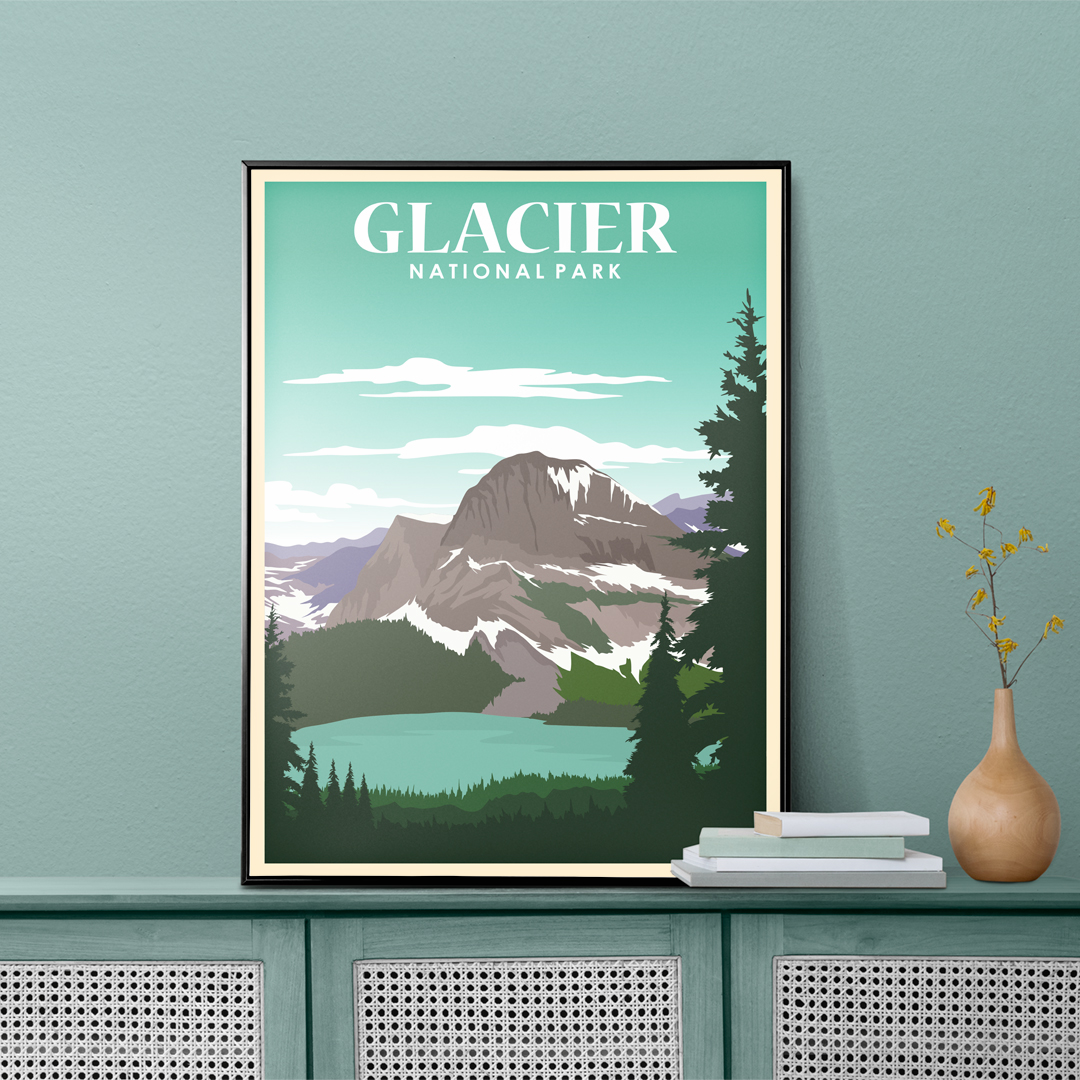
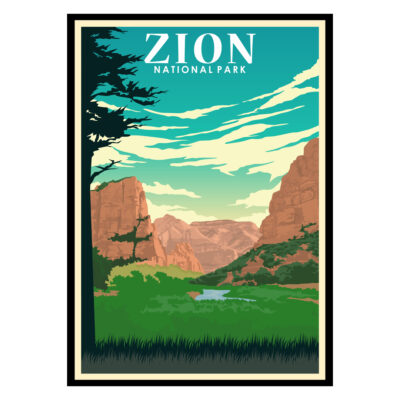
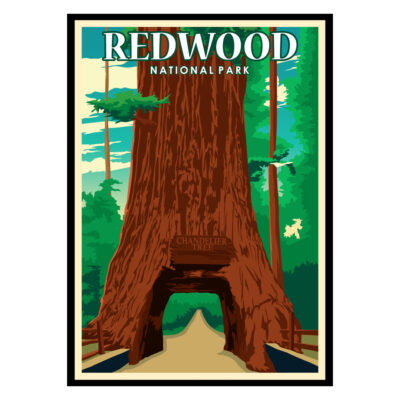
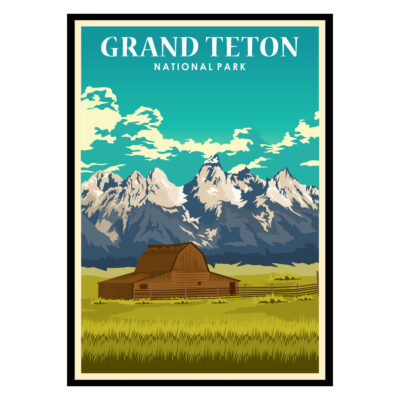
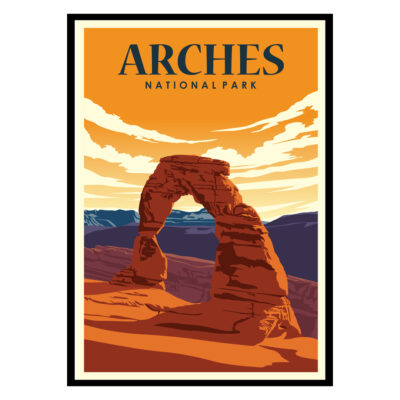
Mark –
Great print of Glacier, my favourite US National Park.